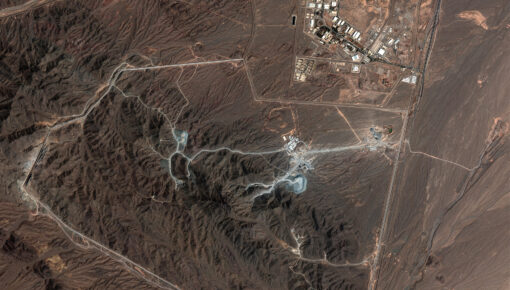The Military Has a New Sexual Assault Plan, But Is It Working?

Soldiers, officers and civilian employees attend the commencement ceremony for the U.S. Army's annual observance of Sexual Assault Awareness and Prevention Month in the Pentagon Center Courtyard March 31, 2015 in Arlington, Virginia. (Photo by Chip Somodevilla/Getty Images)
For the past decade, the Pentagon has been working to eradicate sexual assault in the military.
It has created a task force, scheduled roundtables, webinars and workshops, produced media campaigns, set up a hotline for victims, introduced training sessions and staffed offices on all military bases with trained advocates. Over the years, the Pentagon has drafted several comprehensive strategies for addressing the problem. The Department of Defense’s office for sexual assault prevention and response even has its own seal.
But the Pentagon still doesn’t know whether its latest strategy — an 18-point plan unveiled last year — has actually helped prevent sexual assault, according to a report by the Government Accountability Office, released this month. The military has put in place only two of the 18 tasks it set out to implement. And the hierarchical organization has failed to disseminate information and sufficient staffing to prevention efforts in the four military services, the report found.
“I think sometimes the DOD is misunderstood, that they’re not doing anything. They’re doing things,” said Brenda Farrell, the GAO’s director of defense capabilities and management, who produced the report. “The difficulty right now is [knowing] whether what they’re doing is working.”
The findings come amid broad criticism of the military’s response to the problem, including from members of Congress, former service members who have been victims of assault, and advocacy groups, who have said that the military has been either unable or unwilling to find a way to deal effectively with this complex crime. An estimated 18,900 service members experienced unwanted sexual contact last year, down from 26,000 in 2012, according to the military.
Some have advocated taking prosecution for sexual assault outside of the chain of command, a move the Pentagon has argued would make it harder for commanders to maintain order in their ranks and root out offenders. Attempts to add such a measure to the annual defense spending authorization has twice received considerable support in the Senate, but not the two-thirds majority needed to add the language to the bill.
“This GAO report comes to the same conclusion that a bipartisan majority of the Senate has twice already: the military is failing to police itself when it comes to fighting sexual assault,” Sen. Kirsten Gillibrand (D-N.Y.), who sponsored the amendments, said in a statement.
The Pentagon said the review was conducted just as it was beginning to put its new strategy in place, and that it concurs with the report’s recommendations, said spokeswoman Lt. Col. Gabrielle Hermes in a statement, noting that the issues it raised “mirrored similar concerns” reported by the military’s sexual assault prevention staff and other leaders.
“DOD’s prevention approach builds upon best practices employed in the civilian sector, and leverages military leadership,” she said. “Over the last three years, we have implemented a cycle of assessment, improvement, and accountability for military leadership that exists in no other institution.”
The military has struggled to address sexual assault for years, in part because for some time it has appeared to have had difficulty understanding the scope of the problem. Even though many of the victims are men, past prevention efforts focused largely on encouraging service members not to have sex with enlisted women when they’re drunk.
Today, only 25 percent of service members who are sexually assaulted report the incident, according to the military. Nearly two-thirds of those who do come forward have experienced retaliation — from harassment to physical attacks — for coming forward. That has left perpetrators in the service, and creates a sense of impunity for those who commit these crimes, victims’ advocates say.
The Defense Department’s latest strategy to combat the problem, published in 2014, described the stigma many victims feel, and acknowledged that it can be exacerbated in the military, which has a hierarchical culture that values toughness. It also noted that military research has found that in climates that are demeaning or objectifying to women, the risk of sexual assault increases six fold. When hostile comments or gestures go unchecked, the risk of sexual assault increases five fold, the strategy found.
But the Pentagon’s strategy doesn’t include specific recommendations for how military leaders or the military community generally — over which the DOD has the greatest influence — might address such risks, the watchdog report found.
The Pentagon plan lays out 18 steps, including training leaders in sexual assault prevention, reviewing alcohol policies, and coming up with mobile apps and toolkits. It also includes developing a way for command to check for sex offenses in personnel files. But so far the report found that the DOD has only implemented two: issuing the strategy document, and the goal to “develop a military community of practice” focused on eliminating sexual assault. None of them, however, specify how they would reduce sexual assaults, and they also lack clear metrics for measuring results, the GAO said.
Offices set up to aid victims on military bases are “consistently understaffed,” the report found. At one military base, the watchdog report found that there was only two staff members, including a lone victims’ advocate, for 1,200 service members. On another base, the report said prevention staffers dwindle because service members aren’t always replaced when they deploy.
Despite the shortcomings noted in the report, Farrell said the Pentagon has made “slow” progress since 2008, when she began evaluating its efforts. In recent years, senior leadership has begun to publicly state that eradicating sexual assault is a priority, she said. “If they would follow through, they’ve got the makings of something that could really be beneficial,” she said.





